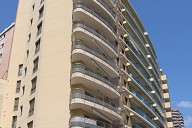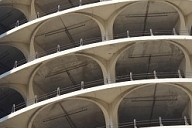Greener living with a view: Garden-Tower near Bern
It is the first high-rise building in Switzerland to feature plants in its façade: the Garden-Tower in Wabern near Bern. The building is sixteen stories high and completely encased in delicate stainless steel mesh through which green shoots will soon be curling. But the steel mesh is much more than a trellis structure for climbing plants. It acts as fall protection as well as showcasing the building as a whole.
Media
Wabern is one of the most desirable places to live in greater Bern, embedded as it is between the Gurten, the hill overlooking the Swiss capital, and the river Aare. Now a new kind of tower rises up in the foreground of the panoramic view of the Gurten, its amorphous contours catching the eye for miles. The concept of the Bächtelenpark residential area is heterogeneous: The tower at its center is 53 meters high and accommodates 45 apartments each with three-and-a-half or four rooms. "Living with a view" is what Basel-based architects Buchner Bründler have embodied in exceptional high-rise architecture.
Integrated in landscape and nature
The basis of the Garden-Tower is a polygon which repeats itself over the entire height of the building. The concrete slabs jut out on every side, offset from one floor to the next, bending up and down on the horizontal plane. They look like a drawing of mountain topography and thus underscore their relationship with the landscape. The apartments with their varying floor plans face two if not three directions. Balconies with at least 45 square meters of space, some deep, some more elongated, and always in the opposite direction to the expansive areas inside, extend the living area. At the same time, the surrounding concrete slabs are a kind of substitute garden with a unique view of the surrounding nature.
Climbing garden
Instead of protective balustrades, the building is fully encased in a mesh of stainless steel cables. It provides a delicate trellis structure which can be planted with climbing plants. A natural green façade will gradually grow over the Garden-Tower providing shade as well as being a striking architectural feature. Positive side effect: The green curtain absorbs CO2, generates pure air and thus plays an active role in climate protection. This makes the residential tower unique indeed. It is the first high-rise building in Switzerland to have a green façade. To ensure it always appears lush green and at the same time fulfils the fire protection regulations, the architects integrated an irrigation facility in the greenery system which automatically detects whether the plants need watering. A total of 100 plant tubs were installed on the floors: These will give rise to a full cover of green on up to 1,200 square meters of façade space. The architects also paid particular attention to which plants were chosen. They all correspond to the different light conditions on the four sides of the building. This guarantees even coverage. Gaps in the balcony areas break up the green façade, bring light into the apartments and frame the view of the landscape for those inside looking out. The architects commissioned stainless steel mesh experts from Carl Stahl Architecture from Suessen in southern Germany with the planning of statics, execution and assembly, as well as the actual assembly itself.
Stainless steel mesh as fall protection
In addition to its function as a design feature, the façade acts as fall protection without the necessity for any further barriers which would negatively impact the organic appearance of the Garden-Tower. Because the preassembled cable mesh construction retains its form regardless of its dead weight and any loads. The opposing curvature and tension of the cables generate stability. To keep mesh vibrations as minimal as possible when leant against, the façade mesh was ensured under high tension – a purely psychological measure to make residents feel safe even at lofty heights.
References
Structure Types
- About this
data sheet - Product-ID
7423 - Published on:
05/10/2016 - Last updated on:
15/10/2016


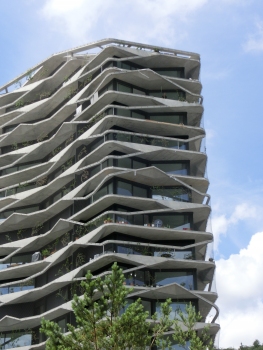
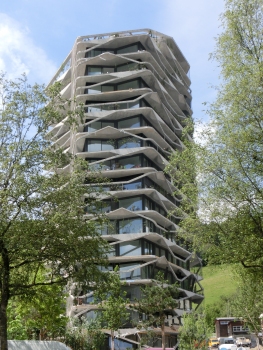

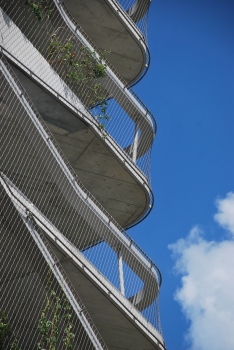


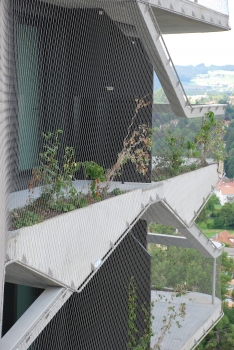
 Carl Stahl ARC GmbH
Carl Stahl ARC GmbH
